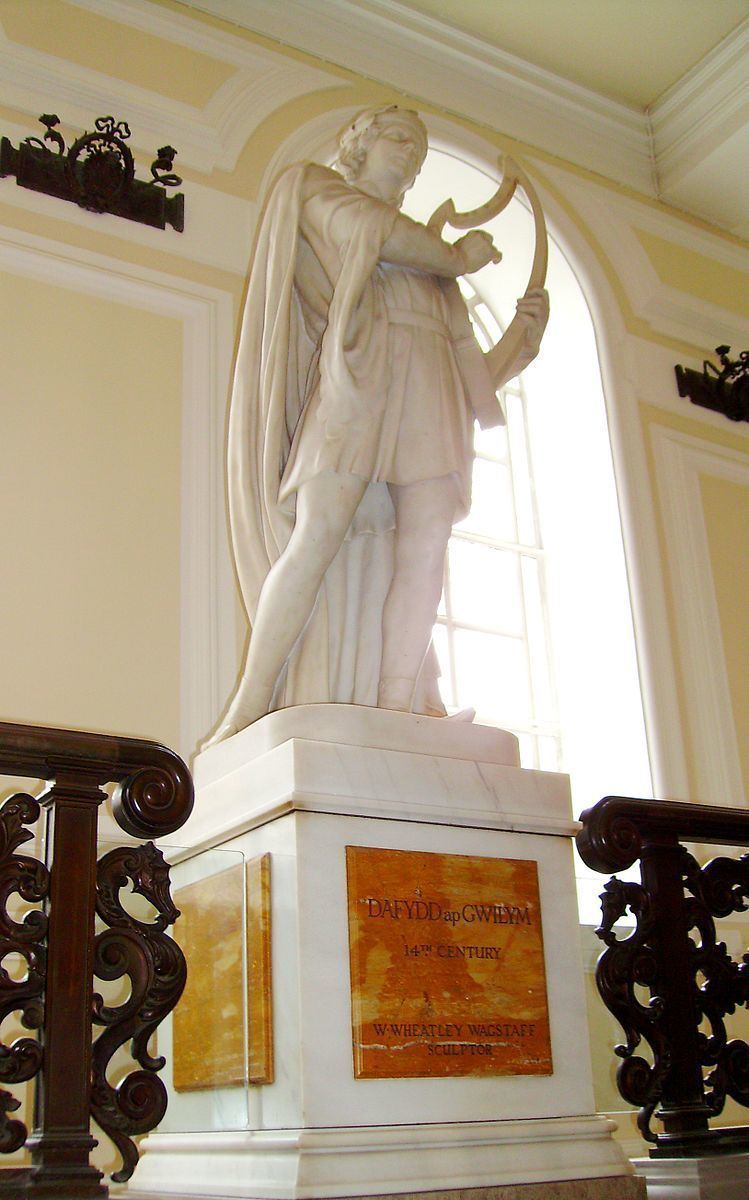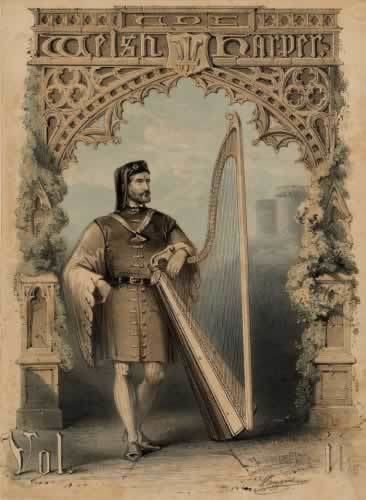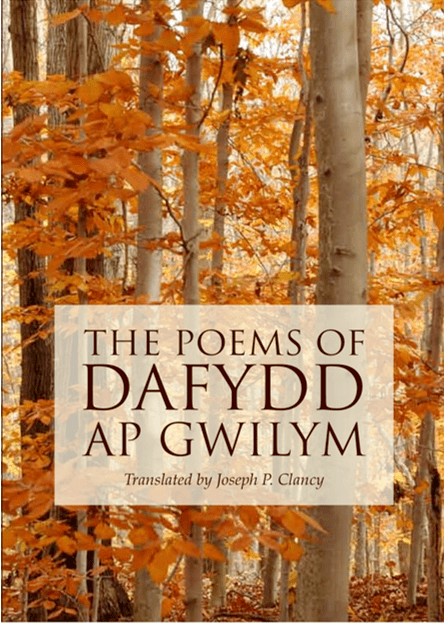Occupation Poet Name Dafydd Gwilym | Period c. 1340-1370 Nationality Welsh Role Poet | |
 | ||
Notable works Trafferth mewn Tafarn, Y Rhugl Groen, Merched Llanbadarn, Morfudd fel yr Haul, Cywydd y gal Died 1350, Wales, United Kingdom Books A house of leaves, Houses of Leaves, Nine Thorny Thickets: Selected Poems, To Remember People also search for Alan Llwyd, David Constantine, Diarmuid Johnson | ||
Y gwynt gan dafydd ap gwilym
Dafydd ap Gwilym (c. 1315/1320 – c. 1350/1370) is regarded as one of the leading Welsh poets and amongst the great poets of Europe in the Middle Ages. (Dafydd ap Gwilym scholar R. Geraint Gruffydd suggests c. 1315-c. 1350 as his dates; other scholars place him a little later, c. 1320-c. 1370.)
Contents

Elegy for dafydd ap gwilym improved sound version
Life

Tradition has it that he was born at Brogynin, Penrhyn-coch (at the time Llanbadarn Fawr parish), Ceredigion. His father, Gwilym Gam, and mother, Ardudfyl, were both from noble families. As one of noble birth it seems Dafydd did not belong to the guild of professional poets in medieval Wales, and yet the poetic tradition had been strong in his family for generations.

According to R. Geraint Gruffydd he died in 1350, a possible victim of the Black Death. Tradition says that he was buried within the precinct of the Cistercian Strata Florida Abbey, Ceredigion. This burial location is disputed by supporters of the Talley Abbey theory who contend that burial took place in the Talley Abbey Churchyard:
On Saturday 15 September 1984 a memorial stone was unveiled by a Prifardd to mark the site in the churchyard at Talley where a deeply-rooted tradition asserts that the poet Dafydd ap Gwilym lies buried. For many centuries the rival claims of Talley and Ystrad Fflur have been debated as the burialplace of Wales’ foremost poet.
The first recorded observation that Dafydd ap Gwilym was buried in Talley was made in the sixteenth century. Talley is located about 30 miles from Strata Florida (Welsh: Ystrad Fflur).
Poetry
It is believed that about one hundred and seventy of his poems have survived, though many others have been attributed to him over the centuries. His main themes were love and nature. The influence of wider European ideas of courtly love, as exemplified in the troubadour poetry of Provençal, is seen as a significant influence on Dafydd's poetry.
He was an innovative poet who was responsible for popularising the metre known as the "cywydd" and first to use it for praise. But perhaps his greatest innovation was to make himself the main focus of his poetry. By its very nature, most of the work of the traditional Welsh court poets kept their own personalities far from their poetry, the primary purpose of which was to sing the praises of their patrons. Dafydd's work, by contrast is full of his own feelings and experiences, and he is a key figure in this transition from a primarily social poetic tradition into one in which the poet's own vision and art is given precedence.
Although Dafydd wrote comparatively conventional praise poetry, he also wrote love poetry and poetry expressing a personal wonderment at nature; Dafydd's poetry on the latter subject in particular is largely without precedent in Welsh or European literature in terms of its depth and complexity. His popularity during his own historic period is testified by the fact that so many of his poems were selected for preservation in texts, despite a relatively short career compared to some of his contemporaries.
Many of his poems are addressed to women, but particularly to two of them, Morfudd and Dyddgu. His best-known works include the following poems:
According to Charles Johnston's explanatory notes on the Astrée / Naïve CD 'Beethoven: Irish, Welsh & Scottish Songs' (2001), the words to WoO155 '26 wallisische Lieder', Nr.14 'Der Traum' (1810), were "translated from the Welsh of Dafydd ap Gwilym". This would be Dafydd's dream-vision poem 'Y Breuddwyd'.
